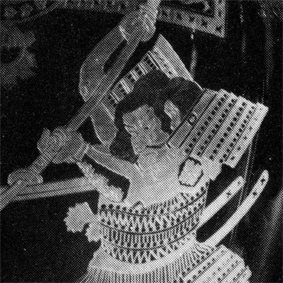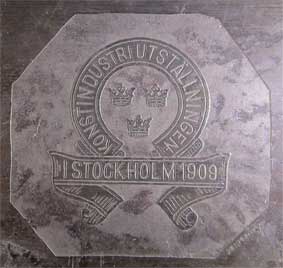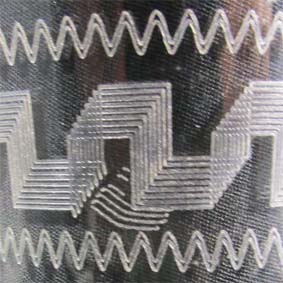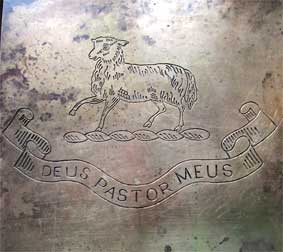Pantographing is another method: a
pantograph can handle several pieces at one time. We have
two: one can take 24 glasses, the other can take 12. In the book
Reijmyre 200 år,
there is mention of one taking 36 pieces.
A pantograph is both more and less versatile than a guilloché machine, depending on the point
of view.
A guilloché machine has the piece turn continuously, the needles never leaving the glass - thus there
can not be patterns with "loose ends".
On the pantograph, however, he needles can be withdrawn from the glass at any moment; thus pantographed patterns
can have lines that suddenly stop. The pantograph renders the pattern of the template, as many times
(around the glass) as here are needles mounted.
A wonderful result of the construction of the pantograph is that one pattern template fits all sizes of
glasses - with, for instance, 4 needles mounted, each needle operates in a sector 1/4th of a full turn.
Further reading on
"The pantograph, how it works". There is also a video.




